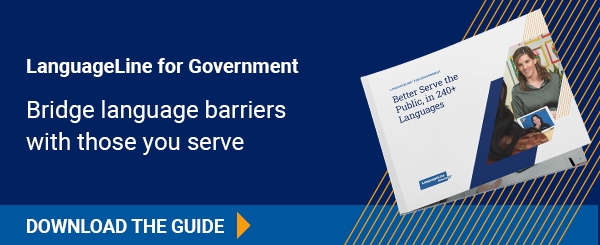 With a new school year already upon us, it’s worth a look at what’s behind the increasing need for language access programs in schools.
With a new school year already upon us, it’s worth a look at what’s behind the increasing need for language access programs in schools.
At the core of the need for language solutions in schools is the principle of providing equal and meaningful access to educational programs. Federal legislation like Title VI of the Civil Rights Act of 1964 prohibits discrimination on the basis of national origin, which today includes language. Other statutes touching on equal opportunity for children (and their parents) to participate in the educational process include the Equal Educational Opportunity Act, Title III of No Child Left Behind Act, and the Individuals with Disabilities Education Act. Mandates to provide equal access to the benefits of public education are a common theme.
The other main driver for language services is the growth in the limited English proficient (LEP) population. In the United States, where 1 in 5 individuals now speaks a language other than English at home, schools encounter significant language barriers. English language learners (ELL) comprised over 9% (or 4.4 million students) in 2012-2013. In California that number reached 22.8%! These statistics don’t account for LEP parents.
Legislation and language access in schools
The legislation around language access in schools rests on a central premise: the failure of schools to communicate with parents, in a way they understand, effectively prevents them from participating in their children’s education. This denial of equal opportunity directly impacts the quality of education, which in turn impacts the children’s future. This doubtless has a negative long-term impact on society and the national economy.
In 2015, the US Departments of Justice and Education released fact sheets highlighting the responsibilities of school districts to provide language assistance to LEP parents and guardians, free of charge. These were some key takeaways:
- Schools must communicate with LEP parents in a language they understand about any program, service or activity that is communicated to English speaking parents. This includes a broad range of activities from student registration and enrollment, parent-teacher conferences, language access programs, student discipline, special education, and many other common activities.
- Schools must provide language assistance to LEP parents even if their child is proficient in English.
- Schools must use appropriate and competent resources—either internal or external-- for interpreting or translating. That means using students, siblings, friends or untrained bilingual staff may not be appropriate. (Complaints filed with the DOJ have noted that bad translations left parents confused and were incomprehensible. Unqualified bilingual persons often do not have the technical skills to interpret or translate accurately).
- School districts should ensure competency of their linguists, starting with the relevant vocabulary and situation at hand, as well as understanding the role of the interpreter, ethical standards and the need for confidentiality. Being bilingual in itself is not sufficient to competently interpret conversations or translate documents.
Developing an effective language access program for schools involves significant work for school districts, but the task need not pose a back-to-school nightmare for anyone. Many districts capitalize on the use of existing qualified bilingual staff and call upon competent external resources to fill the gaps.
LanguageLine Solutions offers schools a range of quality language solutions, whether the immediate need is for interpretation, translation or assessing the linguistic skills of bilingual staff. Beyond that we offer complete support for service roll-out and implementation to any type of organization, supported by guides, videos and support tools for staff. Our language access signage informs both students and parents that language access services are available to them at no cost, facilitating communication with staff.
Find out more about how we can help your district develop its language access program by contacting us.

